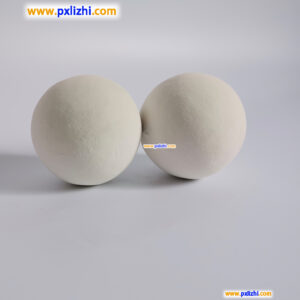
。
# Inert Ceramic Ball Applications in Industrial Processes
## Introduction to Inert Ceramic Balls
Inert ceramic balls are widely used in various industrial processes due to their excellent chemical stability, high mechanical strength, and thermal resistance. These small spherical ceramic materials play a crucial role in improving efficiency and maintaining process stability across multiple industries.
## Key Properties of Inert Ceramic Balls
The effectiveness of inert ceramic balls in industrial applications stems from their unique properties:
– High temperature resistance (up to 1600°C)
– Excellent chemical inertness
– Superior mechanical strength
– Low water absorption
– Resistance to thermal shock
– Uniform size and shape
## Major Industrial Applications
### 1. Petrochemical Industry
Inert ceramic balls serve as catalyst supports and bed materials in petrochemical processes:
– Catalytic reforming units
– Hydroprocessing reactors
– Fluid catalytic cracking (FCC) units
– Ethylene production
– Aromatics production
### 2. Chemical Processing
Chemical manufacturers utilize inert ceramic balls for:
– Distillation column packing
– Gas absorption towers
– Reactor internals
– Acid production processes
– Polymer production
### 3. Environmental Protection
Inert ceramic balls contribute to environmental applications:
– Flue gas desulfurization systems
– Waste gas treatment towers
– Water purification systems
– VOC (Volatile Organic Compounds) removal
### 4. Metallurgical Industry
In metal production and processing, inert ceramic balls are used for:
– Gas purification in blast furnaces
– Non-ferrous metal smelting
– Steel production processes
– Metal heat treatment
## Benefits in Industrial Processes
The use of inert ceramic balls provides numerous advantages:
– Improved mass transfer efficiency
– Enhanced heat distribution
– Reduced pressure drop in systems
– Protection of catalyst beds
– Extended equipment lifespan
– Lower maintenance requirements
## Selection Considerations
When choosing inert ceramic balls for industrial applications, consider:
– Process temperature requirements
Keyword: inert ceramic ball
– Chemical environment
– Mechanical stress conditions
– Required size and surface area
– Pressure drop limitations
– Cost-effectiveness
## Future Trends
The demand for inert ceramic balls continues to grow with:
– Development of advanced ceramic materials
– Increasing environmental regulations
– Expansion of petrochemical capacities
– Emerging applications in new energy sectors
– Technological improvements in manufacturing processes
Inert ceramic balls have become indispensable components in modern industrial processes, offering reliable performance under extreme conditions while contributing to process efficiency and environmental compliance.